Angkor Wat, Possibly the Most Amazing Place I've Ever Been
In Cambodia, my Indiana Jones fantasy came true.
When I was seventeen and living in suburban Denver, Colorado, I saw Indiana Jones and the Raiders of the Lost Ark.
Over the following thirty years, I must have seen the movie a dozen more times. And each time, I had the same thought:
I want to have an adventure in the jungle! I want to explore ancient ruins like Indiana Jones!
Alas, living in the U.S., that seemed highly unlikely, and my Indiana dreams slowly faded.
Then two years ago, Brent and I decided to visit Cambodia.
And those teenage dreams finally came true as I explored the incredible ruins of Angkor Wat.
Angkor Wat at Dawn
Built in the 12th century by King Suryavarman, Cambodia’s most famous temple is aligned so that on the spring and fall equinoxes, the sun rises directly behind the highest tower.
The most coveted moment at Angkor Wat is watching the sunrise behind the five towers of the main temple, each representing a peak of Mount Meru, the mythical home of the Hindu gods.
The morning I went, there were only a few hundred people in the entire complex, making it possible to almost feel what it was like when King Suryavarman watched the same sunrise.
The experience was unforgettable.
Suryavarman and his priests studied the heavens, watching the stars trace their endless trek across the night sky. Like humans all across the world, they tried to divine mystical meaning in what they saw.
What meaning did they find? No one knows for sure, but for me, the meaning was found simply in being in such an extraordinary place.
The Many Mysterious Faces of Bayon Temple
So many amazing sights fill Angkor Wat that it’s hard to choose my favorite.
But Bayon Temple is at the top of my list.
Bayon, built fifty years after Angkor Wat, is most famous for its more than 200 serene faces gazing out from its towers.
Scholars believe the image may be a religious figure named Avalokiteshvara, King Jayavarman VII, or a blend of both.
Bayon’s maze-like corridors are also filled with intricate bas-reliefs of battles, religious ceremonies, and daily life, combining Buddhist and Hindu elements.
I found them endlessly fascinating to study.
But more than two years later, it is those serene faces I see when I close my eyes and think of Bayon Temple.
Ta Prohm — Where Indiana Jones Comes to Life
Welcome to my other favorite temple — Ta Prohm.
Built in the 12th century by King Jayavarman VII, Ta Prohm served as a monastery and center of learning dedicated to the king’s mother.
Wandering through Ta Prohm was where my Indiana Jones fantasy most came to life.
I clambered over fallen stones, stared at towering strangler figs blotting out the sun, and stood in ruins that felt like half-jungle, half-sacred space.
As I looked around, I felt certain that if only I picked the right doorway, I’d discover a lost vault filled with the gold, silver, rubies, and sapphires that the kings of Angkor Wat coveted.
Why is Ta Prohm in such a state of elegant decay?
Because it was built without mortar, and after the Khmer Empire fell in the 15th century, the jungle swiftly encroached on the abandoned buildings.
Ever so patiently, the strangler figs worked their way into gaps, prying the buildings apart and knocking them to the ground.
Unlike many other temples, which have been painstakingly reconstructed, Ta Prohm has largely been left as it was found. (Which is why Lara Croft: Tomb Raider, starring Angelina Jolie, was partly filmed here.)
And that’s where the magic lies — in seeing these ruins as they were before being “rediscovered” in 1860 for the West by Henri Mouhot, France’s own Indiana Jones.
Or Côte d'Azure Rousseau, if you’d like.
Terrace of the Leper King
This intricately decorated terrace gets its name from a moss-covered statue thought to resemble a leper, though it likely represents Yama, the Hindu god of death.
Or perhaps it’s a Khmer king. There’s no way to know.
Behind the outer wall, archaeologists discovered a hidden inner wall decorated with detailed carvings of nagas, garudas, yaksas, apsaras, and devatas.
The imagery depicts the underworld below and spiritual beings rising toward the light.
A fine-grained yellow/grey sandstone was used for the carvings, which made it possible to carve so much detail into the stone.
But where did that sandstone come from?
From the Kulen Mountains, which lie up to forty kilometers from Angkor Wat.
Quarrying and transporting the stone to the temple sites required entire communities devoted to doing nothing but quarrying and moving the stone.
And elephants. Lots and lots of elephants!
Those elephants dragged the stone down from the mountains to canals dug by hand and then filled with water.
Once the blocks of stone were floated to Angkor Wat, elephants — and possibly people — were used to transport the sandstone to the construction sites.
There the scenes of Angkor Wat came to life in stone.
Koh Ker — Before There Was Angkor Wat
Located 120 kilometers from Angkor Wat, Koh Ker predates it by two centuries and briefly served as the Khmer Empire’s capital.
Today, Koh Ker feels remote and rarely visited, with most of its 100+ structures still hidden by jungle and not open to tourists.
We only know of their existence thanks to aerial surveys and ground-penetrating radar, which reveals temples hidden to the naked eye.
Highlights include Prasat Pram, where strangler figs engulf the ruins, and Prasat Prang, a 36-meter (118-foot) seven-tiered pyramid that towers above the forest.
And from the top of Prasat Prang, we saw nothing but jungle stretching away in every direction.
The town of Siem Reap was a two-and-a-half-hour drive away over bumpy roads, and the city of Battambang was another two and a half hours from there.
For the first time, I truly grasped just how far from everything we were.
No, I hadn’t retrieved any golden idols or run from a giant stone rock.
But I had still come pretty damn close to feeling like Indiana Jones.
If you enjoyed this newsletter, I would appreciate your sharing it with someone you think might also like it.
Michael Jensen is a travel writer, amateur photographer, and novelist. Check out his other newsletter about his travels at BrentAndMichaelAreGoingPlaces.com.


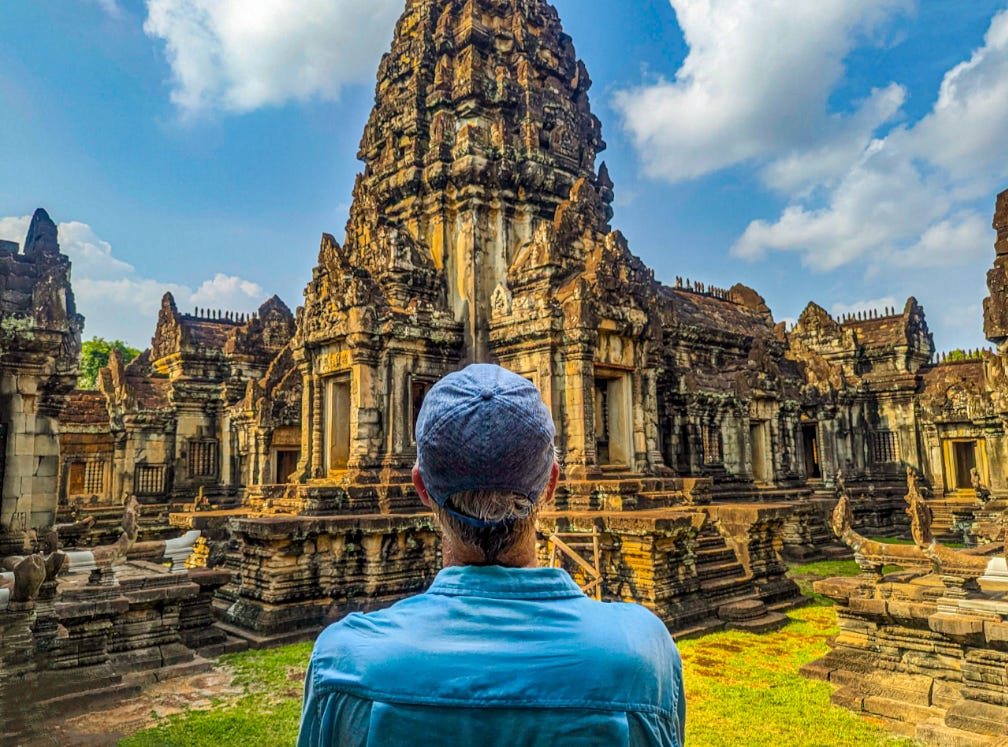
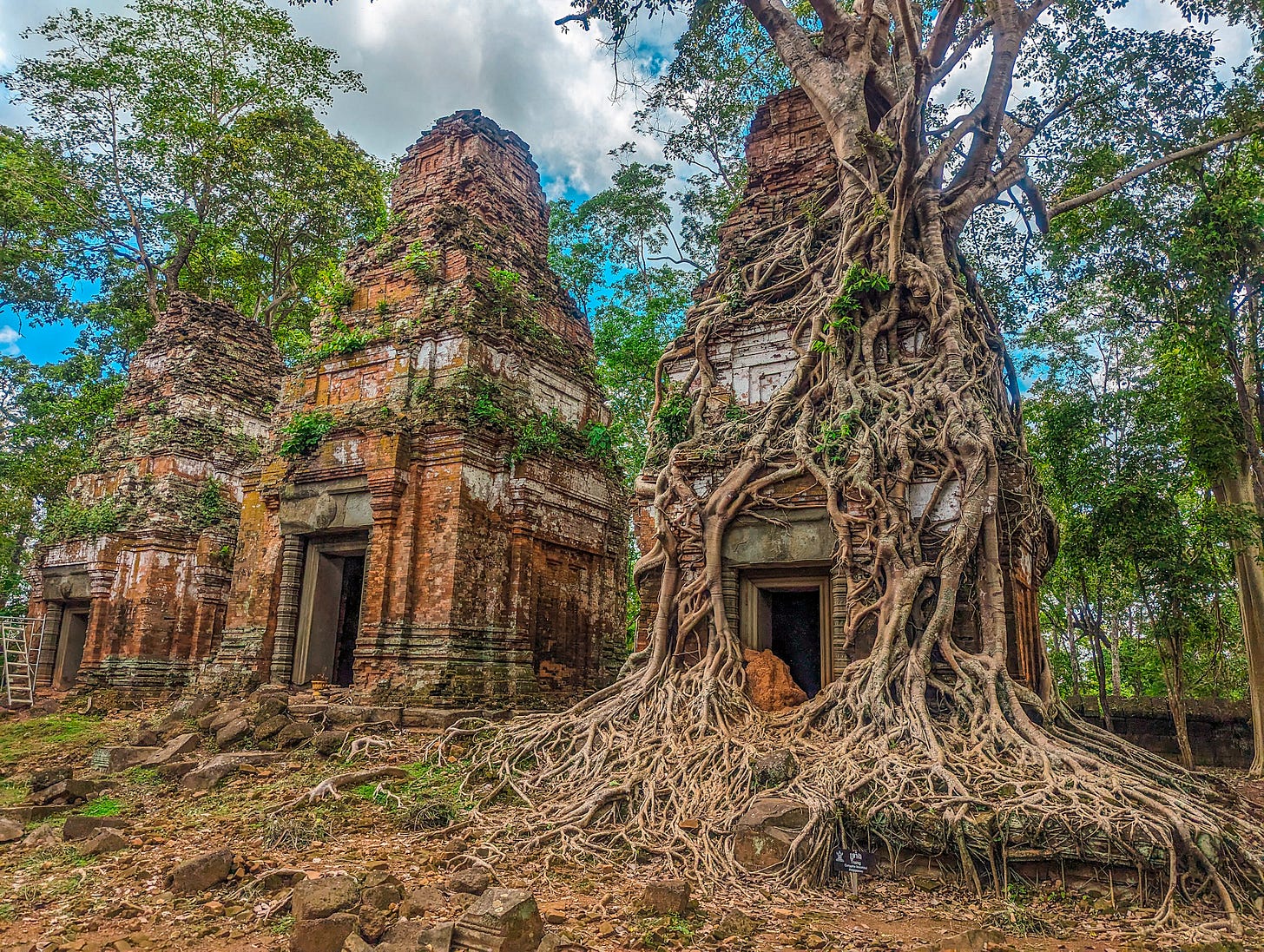
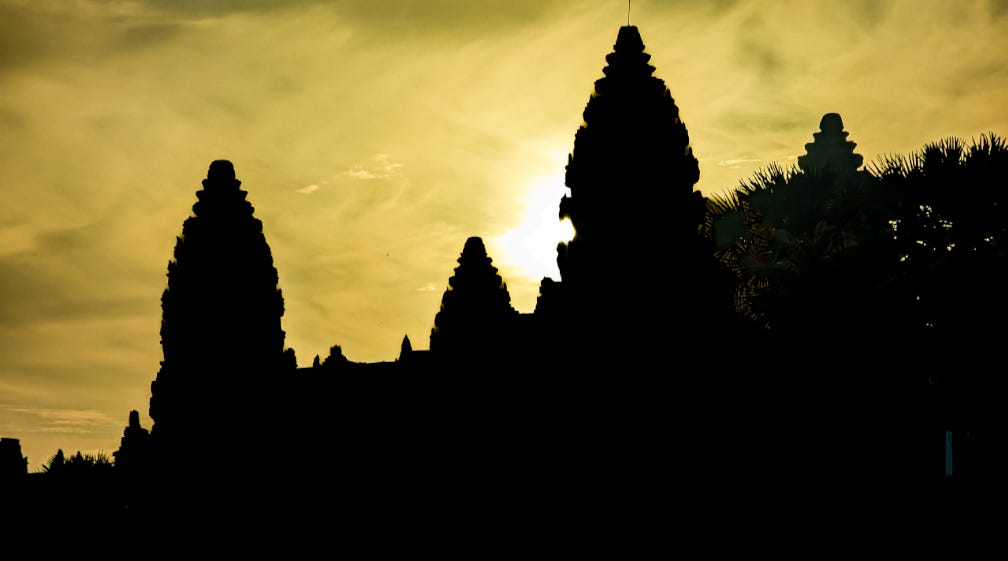
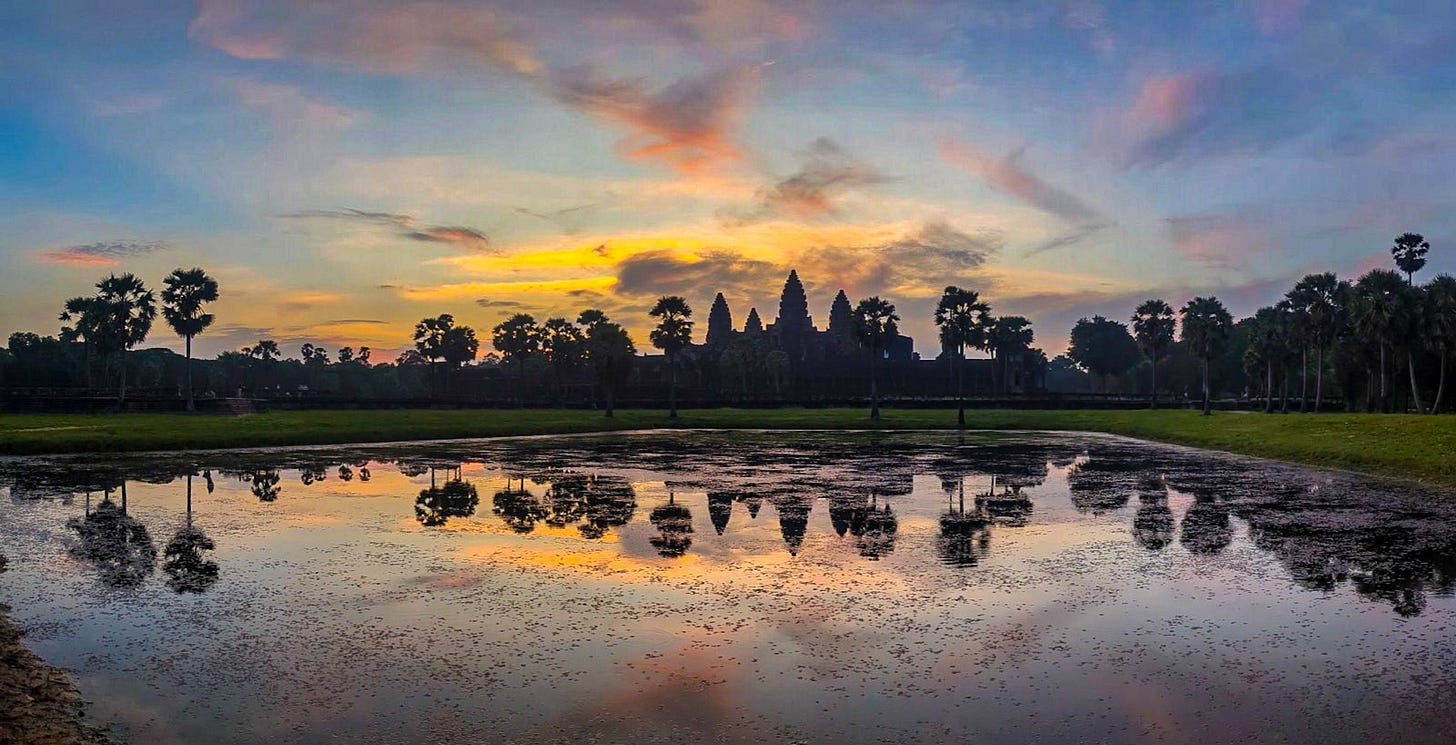

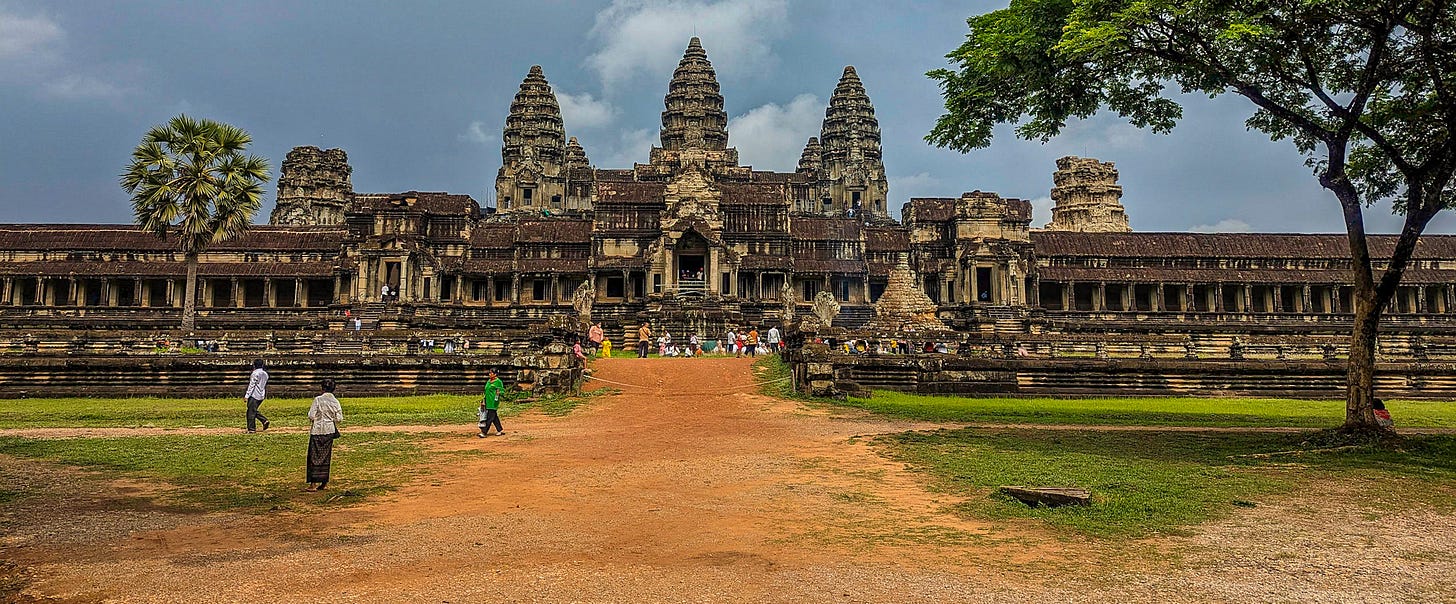
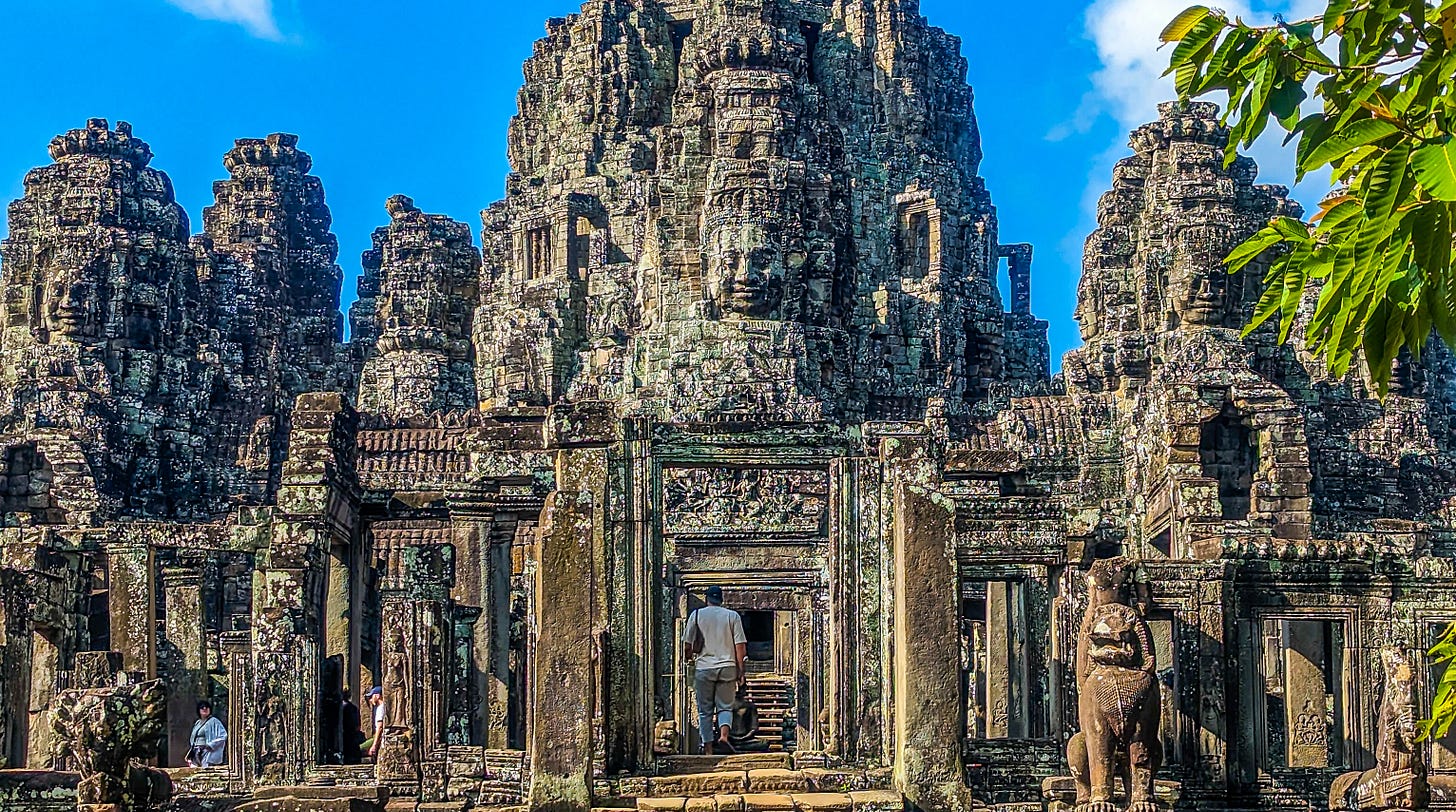
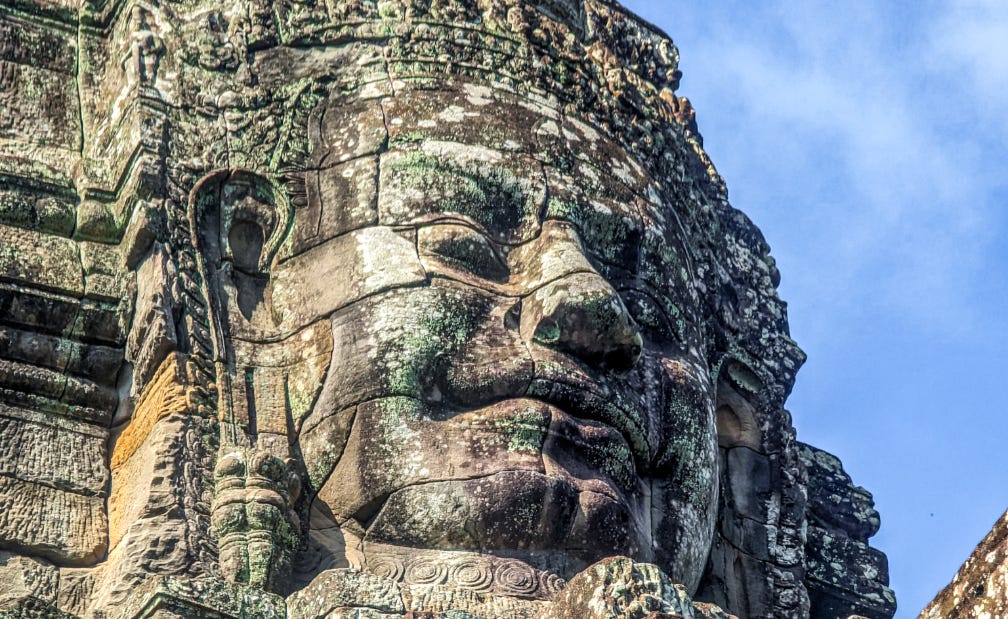
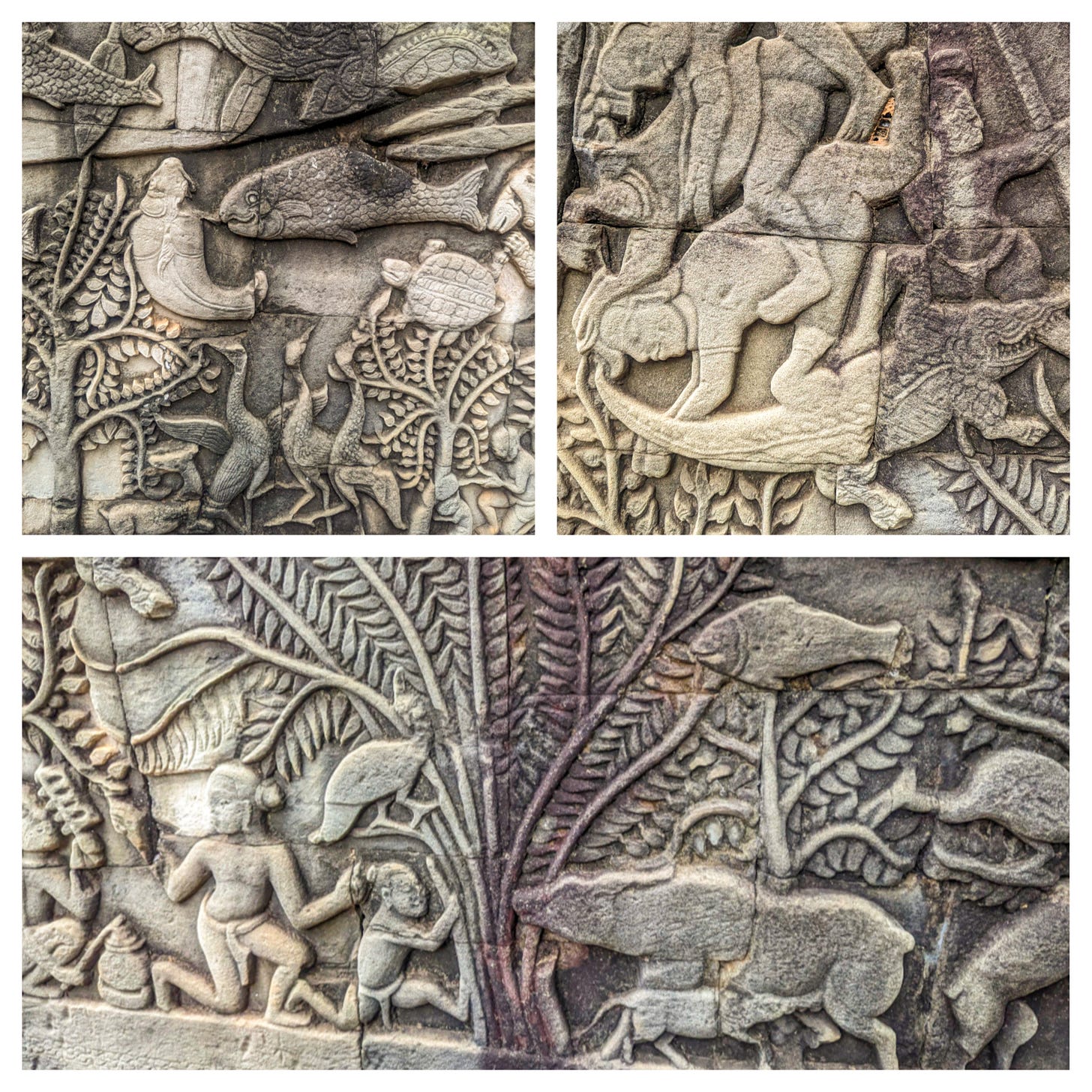
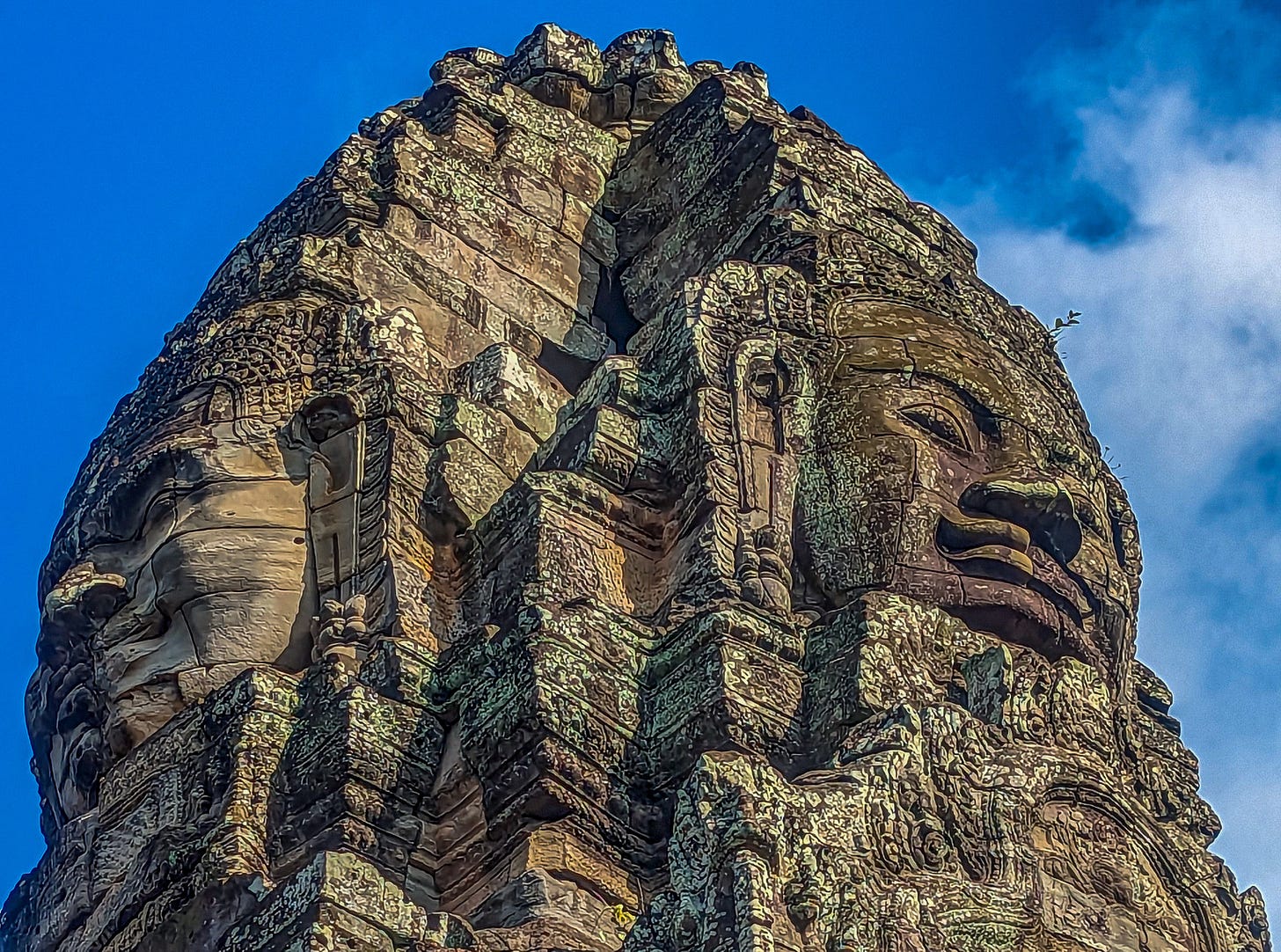
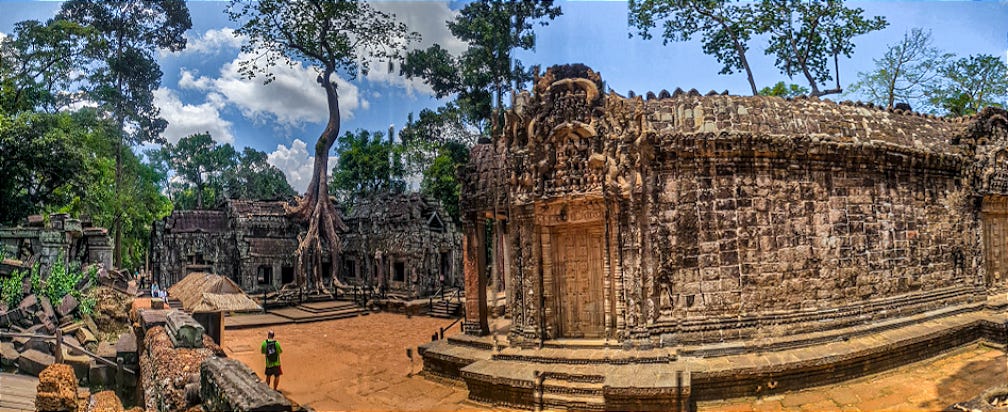
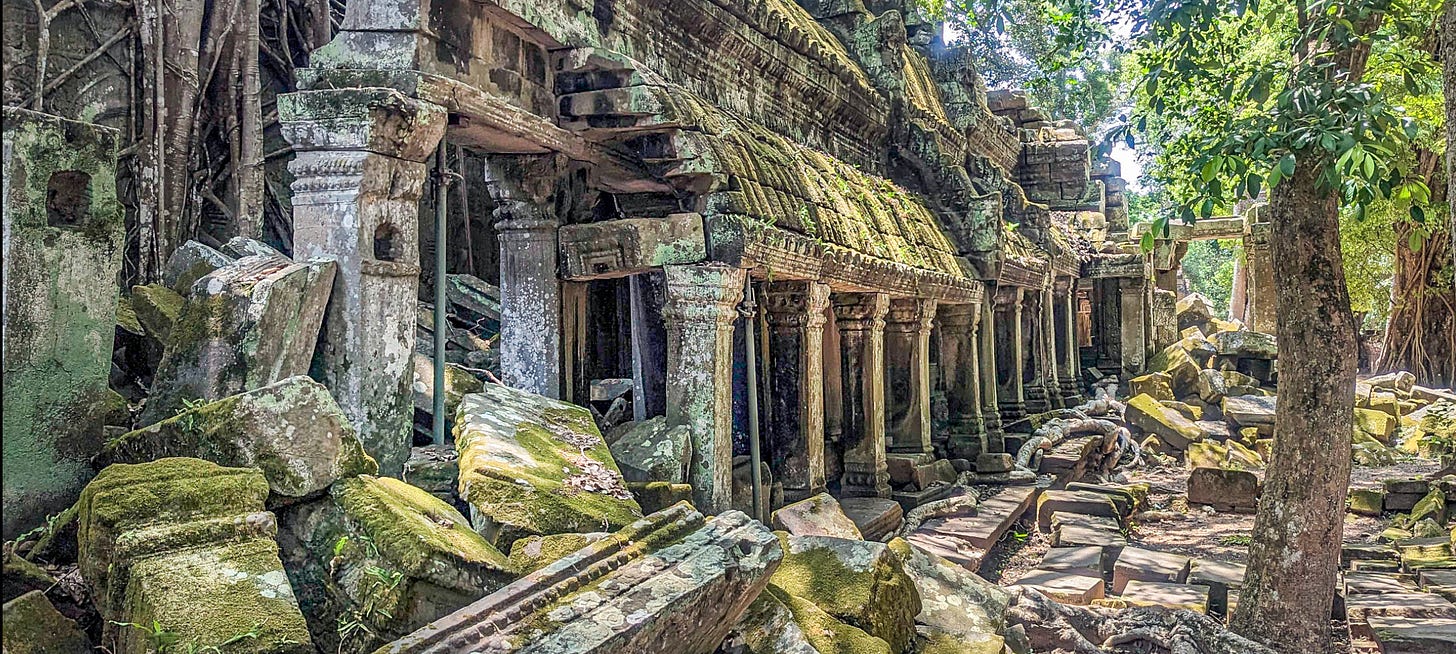
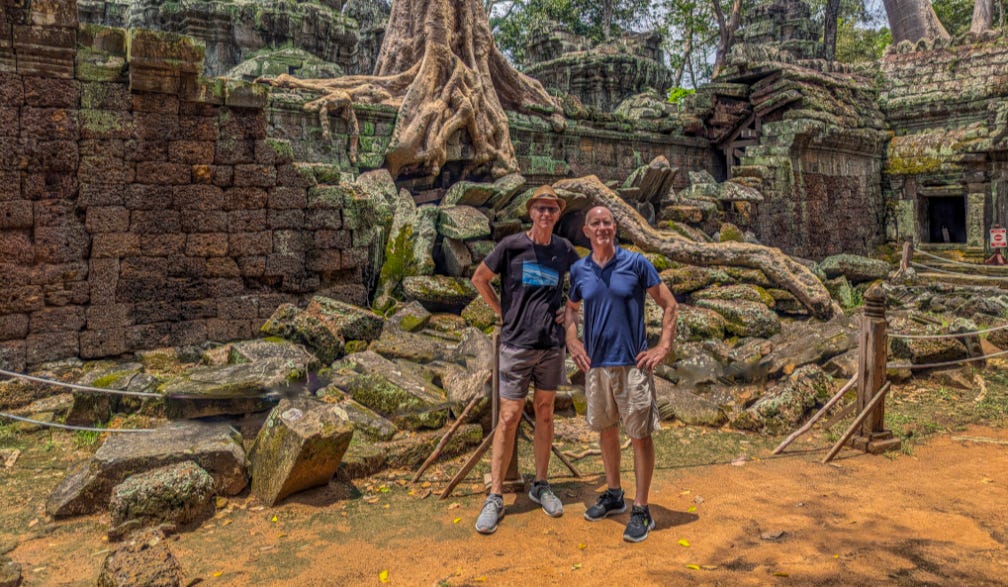
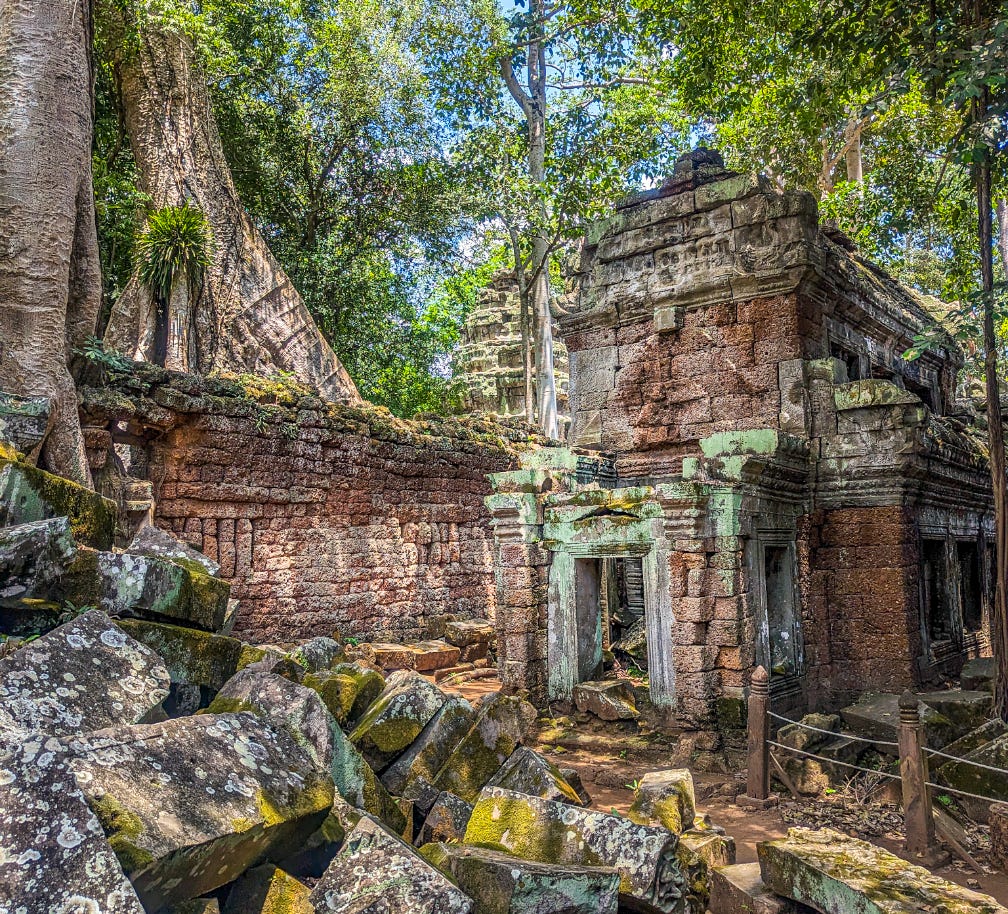
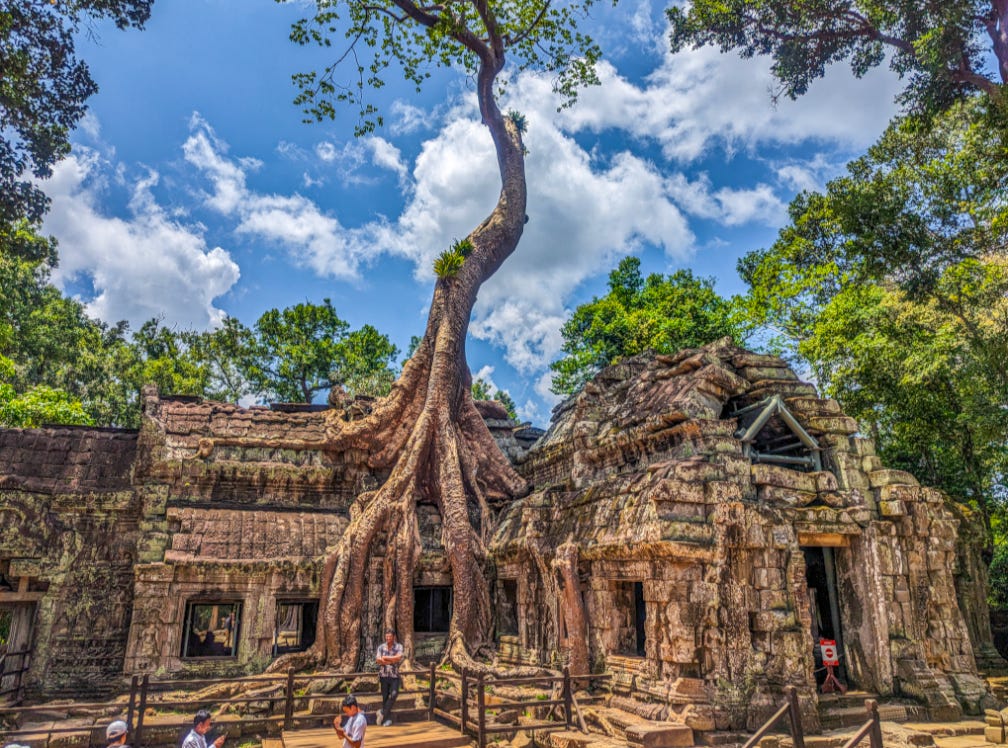
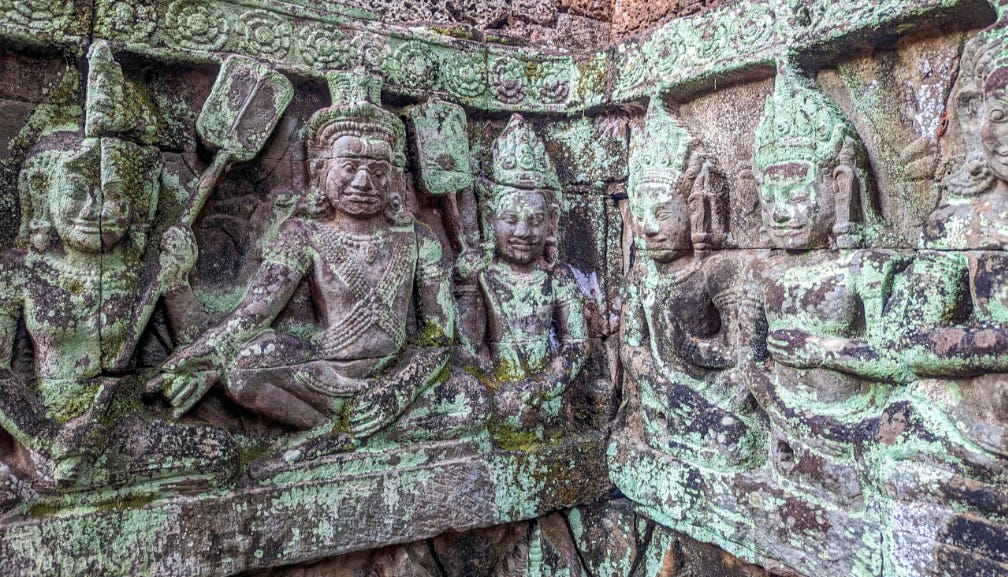
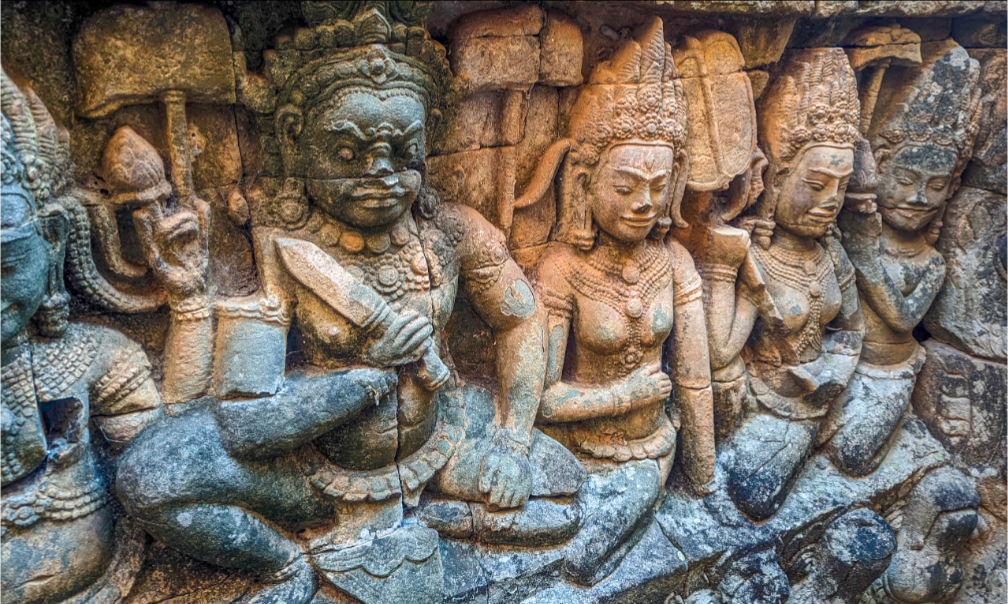
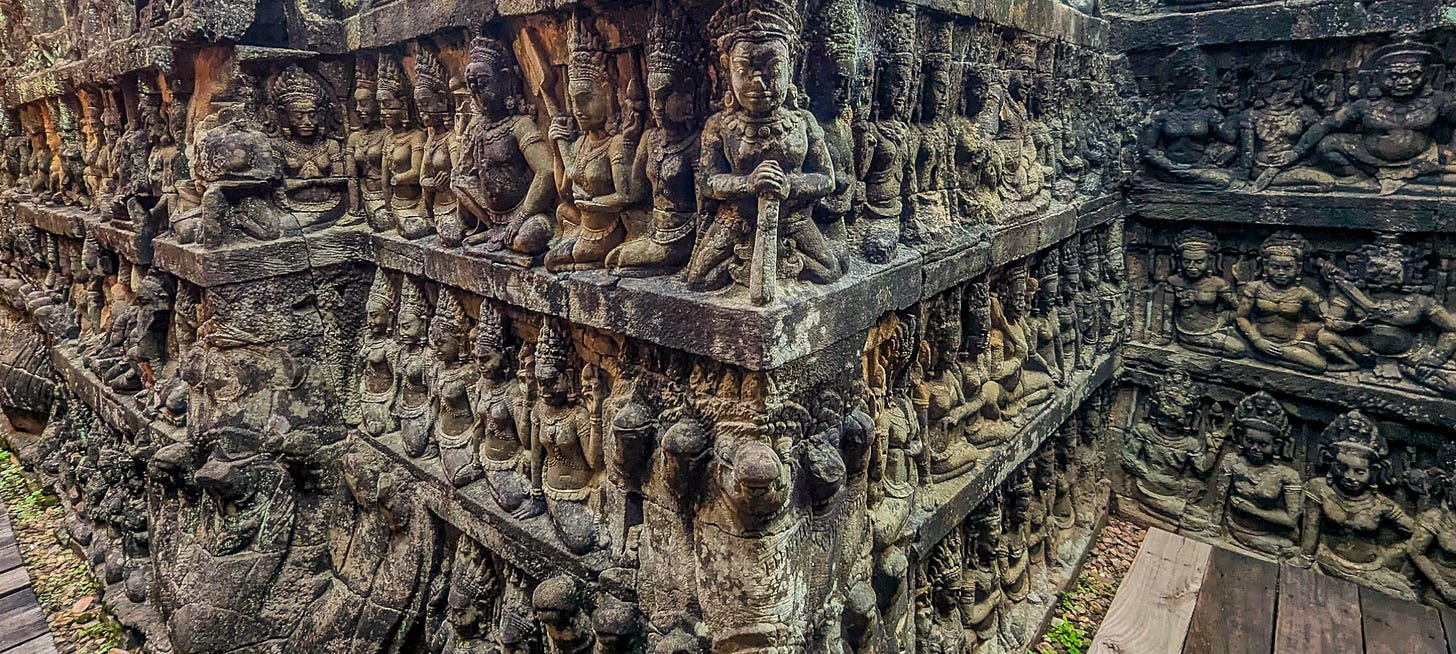
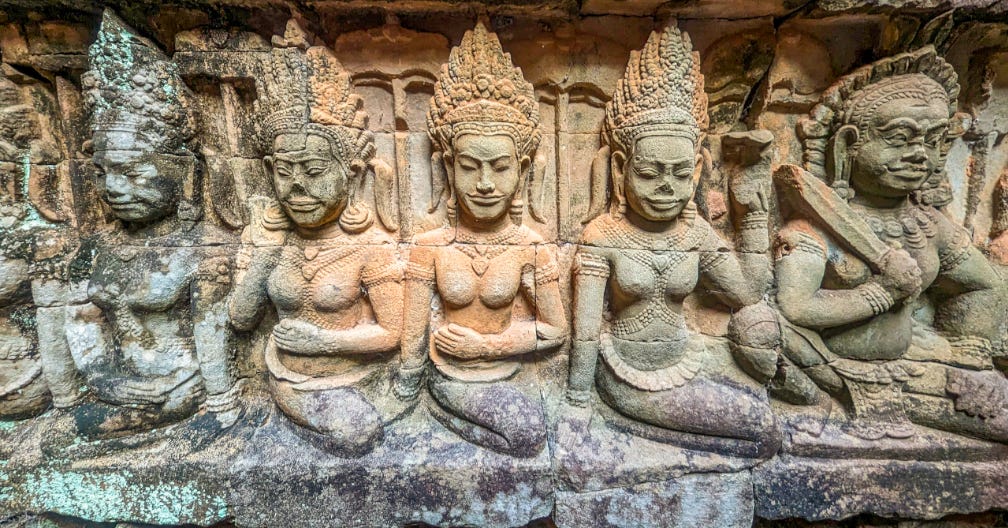
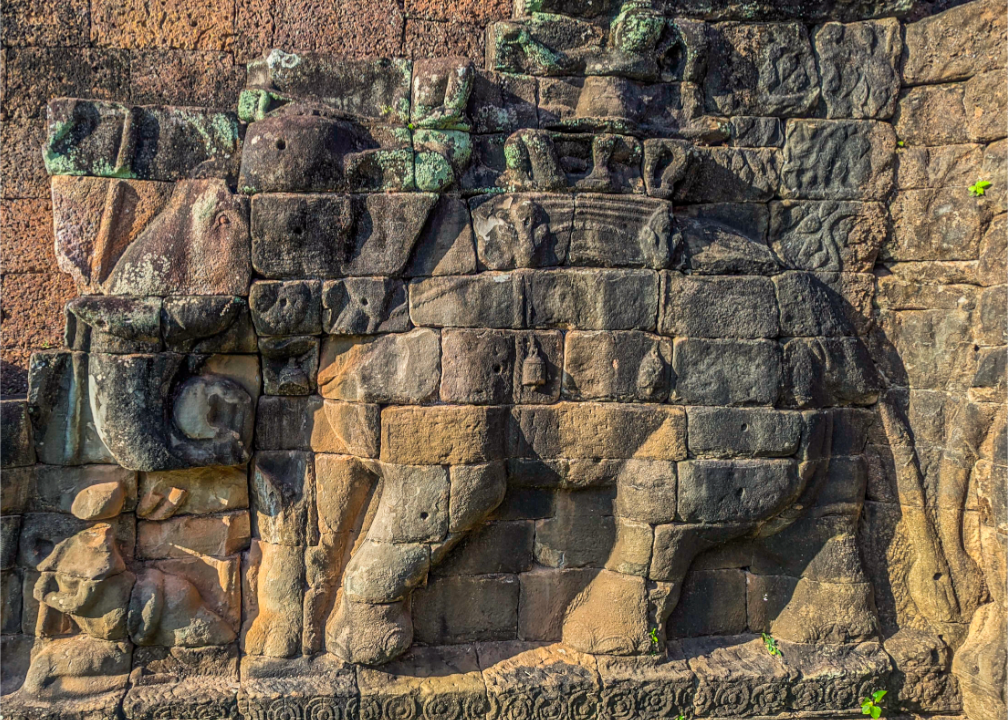
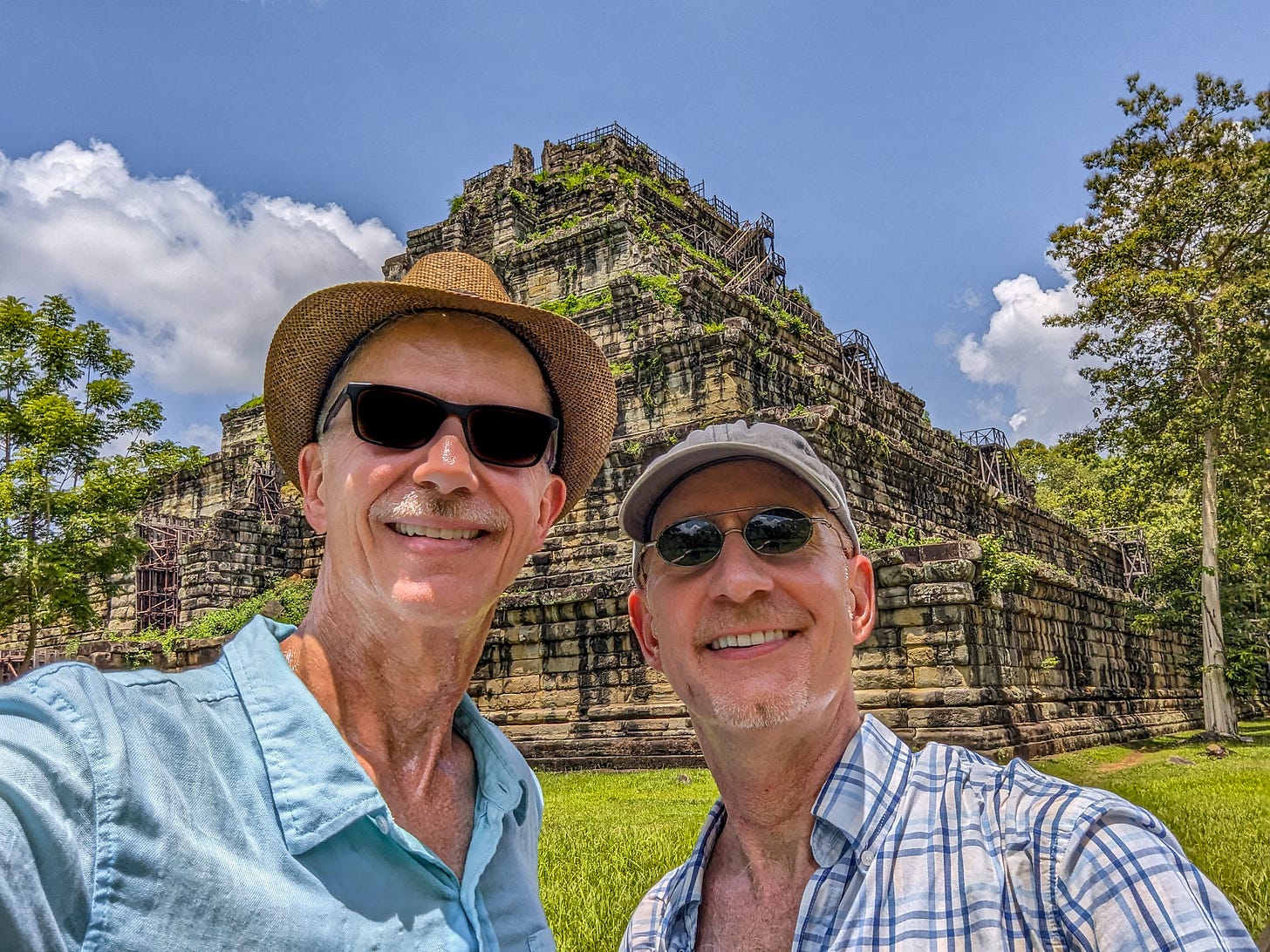
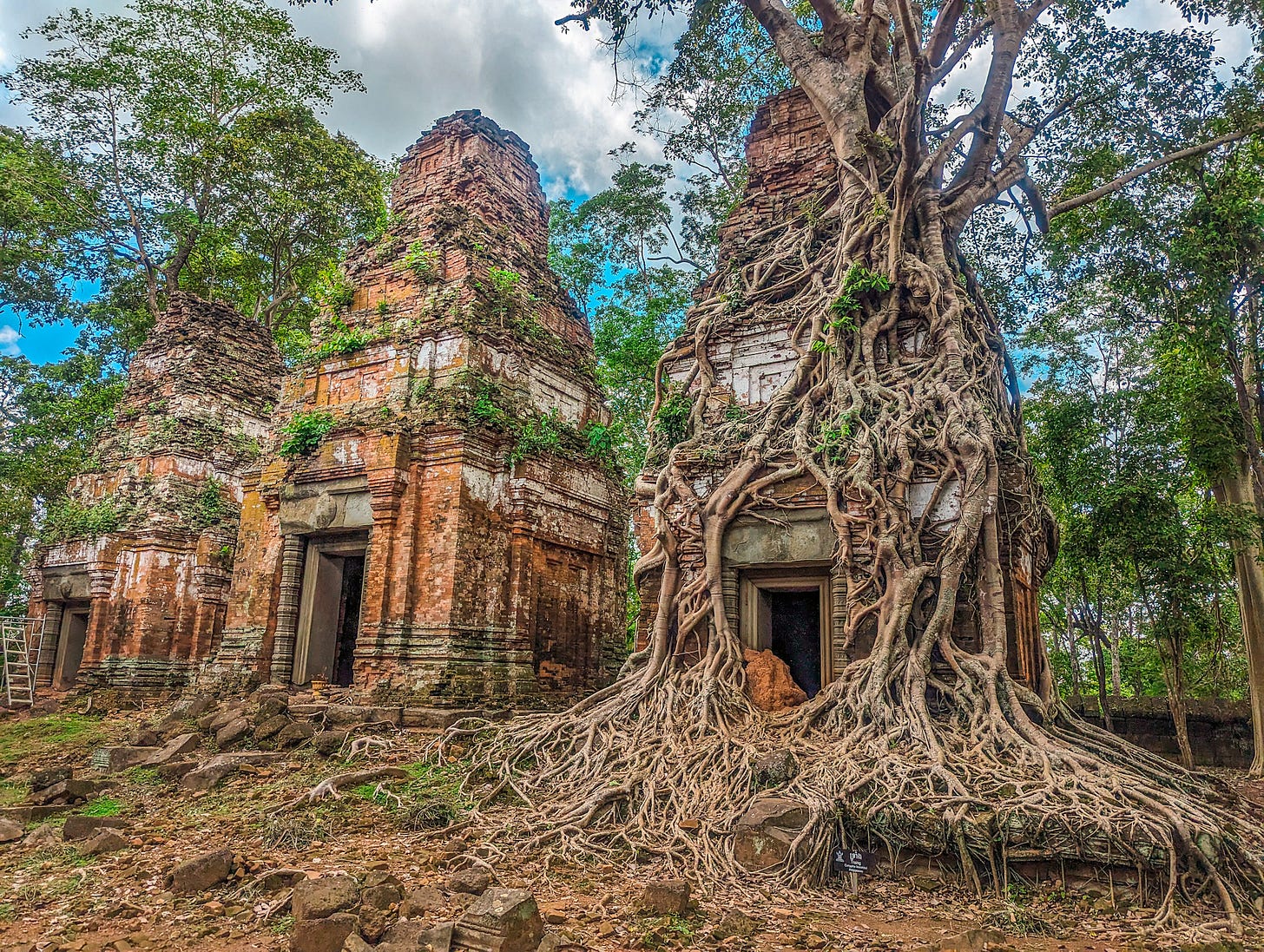
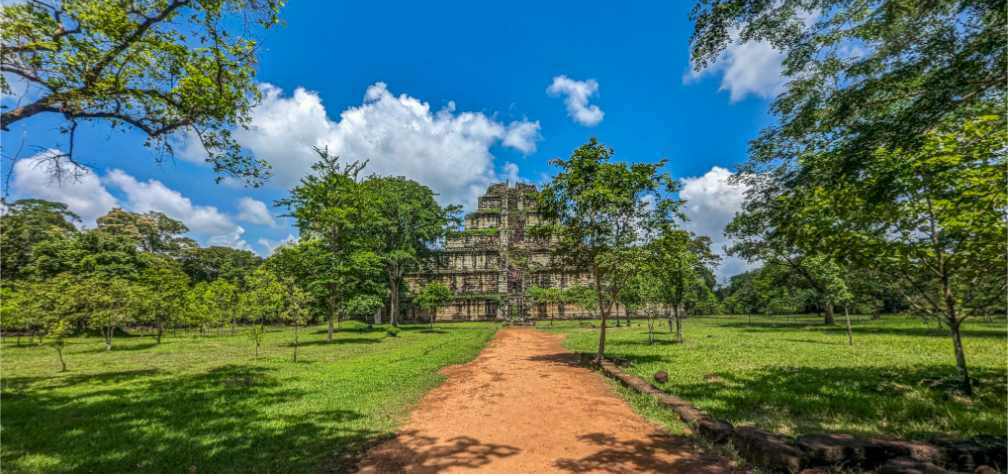

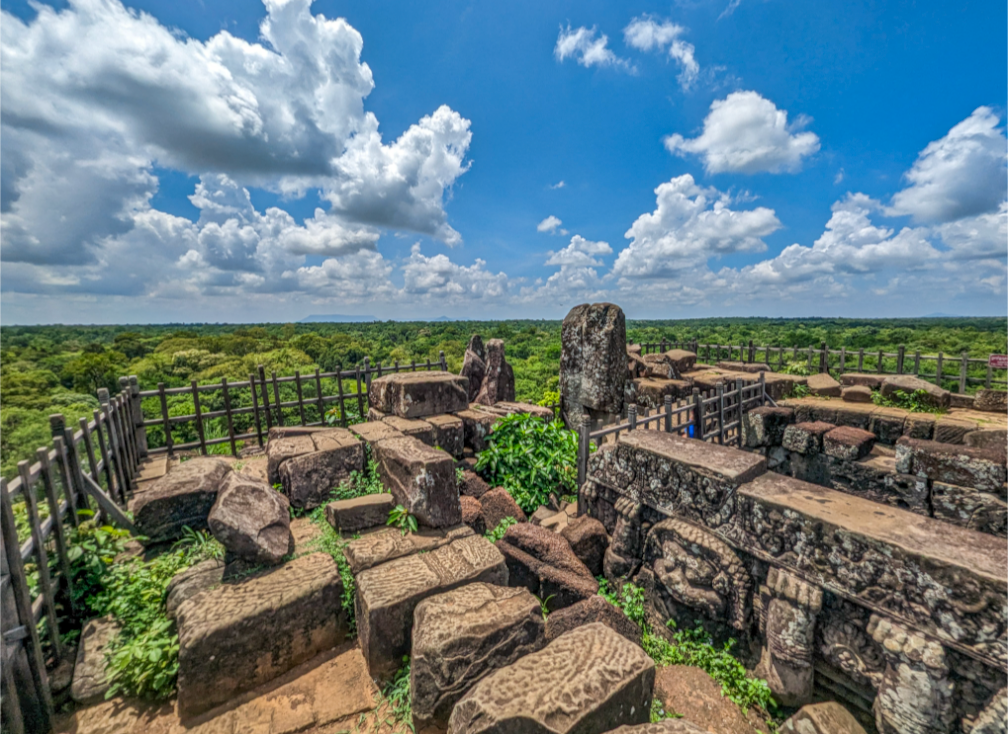
No grave robbing while dodging booby traps?
Angkor Wat has been on my bucket list for ages!